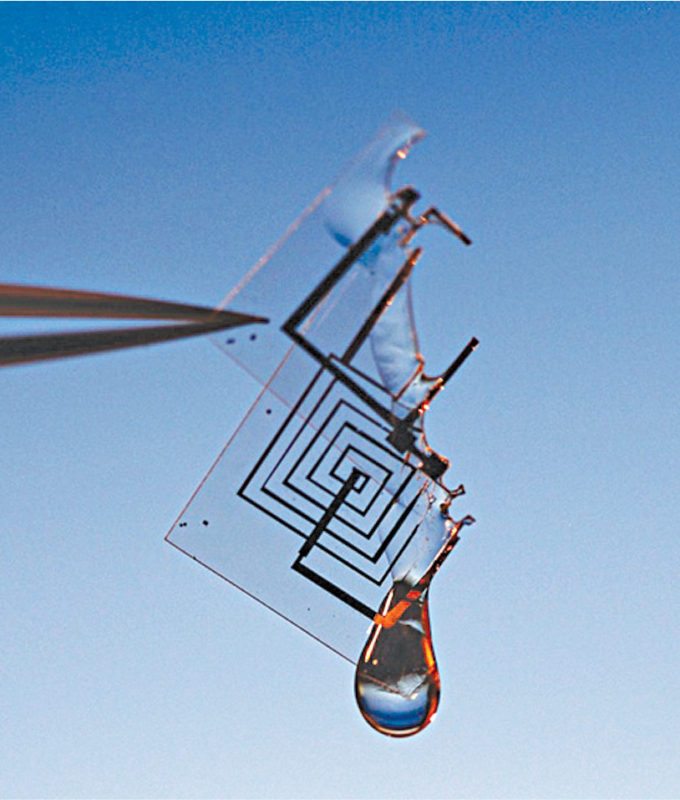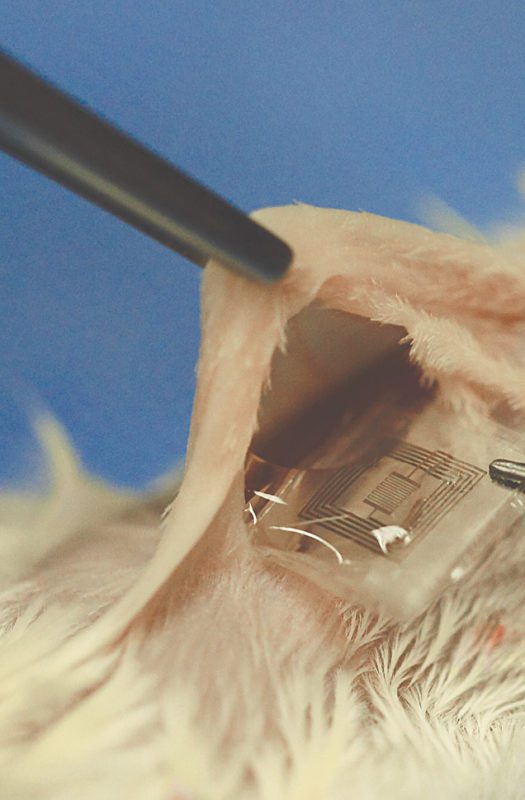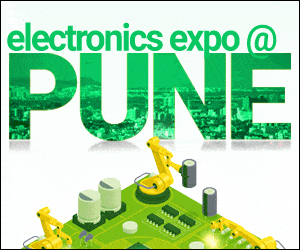Electronic devices are built to last. But now their lifespans can be controlled, courtesy burgeoning research into transient electronics, or devices that are meant to serve a specific function before completely dissolving into their environment over a predetermined span of weeks, months or even years. Moreover, with a degrading environment where electronic waste also plays a major role, the need for such electronic devices that can be disposed of when we want increases.
The generation of heaps of electronic waste around us is compelling scientists to look towards the development of devices that will dissolve either on command or with time.
The technology that can break electronics down using a specific environmental trigger would allow metals and other non-biodegradable elements to dissolve down to their molecular elements for recycling. Self-destructing electronic devices is a step towards greatly reducing electronic waste and boosting sustainability in the use of electronic devices in our daily lives.

Potential of transient electronics
From medicine to military, transient electronics has many potential applications, specially where sensitive data is used. Applications include military electronic equipment, credit cards, passports and any application in which the electronic device is to be used for a defined period of time, for example, bioelectronics, implantable electronics, environmental monitoring applications and so on.
Millions of patients have benefited from the innovative development of medical electronic devices such as pacemakers or medicine-dispensing agents implanted in the body for either diagnostic or therapeutic benefits. While many such devices have revolutionised modern medicine, these often outlive their purpose in the body and require surgical removal to avoid complication.
But rather than surgery, what if these could simply disappear? That is the concept behind transient electronics. Transient electronics offers robust performance compared to current devices but fully resorbs into the environment after appropriate time—ranging from minutes to years, depending on the application.
To explore these possibilities, scientists have been working with an array of natural materials to test how well these perform in electronic devices and whether these would cause side effects or damage when implanted. One day it may transform the consumer electronics industry, but researchers are currently more interested in the devices’ potential for medical care through implantable sensors or drug dispensers, as well as military exploits and environmental monitoring. Research into such devices has made rapid progress; preliminary versions of vanishing electronics might be available within the next few years.
Applications
Medical implants that are only needed for a few weeks could just disappear thereafter, without requiring extra surgery to remove these from the body. And, no one would have to retrieve dozens of transient water-quality sensors from a river undergoing water-quality monitoring. The electronics would dissolve without a trace and without harm to the environment.
Scientists have already designed transient electronics in the form of temperature sensors, solar cells and miniature digital cameras, for instance. However, earlier versions of bio-resorbable devices were made of materials that only partially dissolved, leaving behind residues, and did not perform as well as current devices. Though this area is at present largely unexplored, researchers are emphasising on the potential applications of transient electronics in the commercial world. Given below are some exotic applications of transient electronics.
Scientists have made key advances towards practical uses of a new genre of tiny, biocompatible electronic devices that could be implanted into the body to relieve pain or battle infection for a specific period of time and then dissolve harmlessly. The medical device, once its job is done, could harmlessly melt away inside the body.
Researchers are conducting further studies, centred around degradable polymer based materials that would make suitable platforms for other electronic components, including work on transient LED transistor technology. They have produced a blue LED mounted on a polymer base with electrical leads embedded on it. When it comes into contact with a drop of water, the base and leads begin to dissolve and the light goes out.
A lost credit card could vanish from existence (but most likely still leave debt behind), a secret diary could be programmed to self-destruct, should it be removed from its hiding spot, and sensors stored with food could indicate when it has reached temperatures that would cause the food to spoil.

The real-world application for transient electronics is, perhaps, in the field of military espionage. Should a spy or informer carrying sensitive information be captured, injured or worse, the electronics could be triggered to melt away before any classified information is gleaned by enemy forces.
A military device could collect and send data and then dissolve away, leaving no trace of an intelligence mission.
An environmental sensor could collect climate information and then wash away in the rain.Electronic waste can also be controlled by designing integrated circuits out of materials that are biodegradable. Transient electronics, the new class of silk-silicon devices, promises a generation of medical implants that would never need surgical removal, as well as environmental monitors and consumer electronics that can become compost rather than trash.
Developmental status
Transient electronics can go as far and as complex as the demand and applications allow. Development of self-destructing devices came from a broad multi-disciplinary collaboration uniting researchers from all fields of science and technology. Multi-disciplinary research groups have tackled the problem of using other triggers to break down devices, including ultraviolet light, heat and mechanical stress. The goal is to find ways to disintegrate the devices so that manufacturers can recycle costly materials from used or obsolete devices, or so that devices could break down in a landfill.
Previous research in the area has explored the use of transient materials to create dissolvable devices such as transistors, resistors and diodes. Describing the research, researchers have mentioned that polymer composites consist of different ratios of gelatin or sucrose integrated with poly (vinyl alcohol) matrices. They have also demonstrated that dissolution and transiency of polymer composites could be retarded or enhanced by addition of gelatin or sucrose at different ratios, respectively.
Researchers are experimenting with a blend of programmable biodegradable and transient insulating polymer films. They have found that, by adding gelatin to the mix, dissolution can be slowed, while addition of sucrose speeds up the rate of transiency.
Using these special polymers, researchers were able to build and test an antenna that was capable of sending data and then completely dissolving when a trigger was activated. One constant in this experimentation with different composite structures is that the material maintains the appropriate physical properties to function as a substrate for electronics.
Scientists have tested several biodegradable materials including DNA, proteins and metals for making transient electronics. Tiny electronic sensors and devices that can be implanted in the body and then dissolve almost without a trace are getting closer to reality.
Efforts are on to develop a transient memory resistor with dissolvable components. This electronic component, also called a memristor, is a new type of resistor that regulates the flow of electric current and also remembers charges.
A flock of small, single-use drones capable of making precise deliveries or completing other military missions and then vapourising into thin air sounds suspiciously like science fiction, but such devices have already been developed and are being brought into the realm of reality. One intriguing example of these ephemeral materials is small polymer panels that sublimate directly from solid to gas.
So far, the disappearing antenna is the most impressive application of this technology. One minute, it is an antenna broadcasting important coordinates or whatever. Drop in a solution, though, and the next minute it is gone—nothing but a few flecks of metal remain.
Another device is a blue LED. It is bright and shiny, and then it is gone, almost without any trace.
Researchers hope to develop more sophisticated devices like a credit card that could dissolve when lost by just sending a signal from a smartphone to start the process.
A new technology can make computer chips self-destruct when remotely triggered. The new method uses silicon computer wafers attached to a piece of tempered glass that shatters into smithereens when heated in one spot. Heat can be turned on via a remote, which, in the future, could conceivably be triggered by anything using Wi-Fi to a radio frequency signal.
Methodology
Researchers have created electronics that will self-destruct on command, and the technology uses radio frequency, acid and a layer of wax on the circuit to let the devices melt with an application of heat or on receiving a signal from a remote device.
They have dissolved electronics in water, which could be used for biomedical implants using heat as the trigger. Heat-triggered devices use magnesium circuits printed on very thin, flexible materials. They have embedded a weak acid in a bit of wax on the circuit. When wax is heated, acid is released and dissolves the components. To remotely trigger the reaction, researchers have installed a heating coil that the radio signal turns on. That, in turn, melts the wax.
Researchers can control how fast the device degrades by tuning the thickness of wax, concentration of acid and temperature. They can now design a device to self-destruct within 20 seconds to a couple of minutes after heat is applied. Devices can also degrade in steps by encasing different parts in waxes with different melting temperatures.
This gives precise control over parts of a device that are operative, creating possibilities for sophisticated devices that can sense something in the environment and respond to it. To remotely trigger the reaction, researchers have embedded a radio frequency receiver and an inductive heating coil in the device. You can send a signal to cause the coil to heat up, which melts the wax and dissolves the device.
Conclusion
Transient electronics or self-destructing electronic systems work until these are no longer needed, at which point these dissolve completely—dissolution is triggered by even ordinary water in their operating environment. The most immediate application envisioned by developers is for medical devices that dissolve in the human body in a set period of time after being implanted.
Researchers have pulled off a disappearing act for electronic devices that could change the way we think of our gadgets, as well as introduce new capabilities for medical implants and spy gear. In the future, they envision more complex devices that could be adjustable in real time or responsive to changes in their environment such as chemistry, light or pressure.







